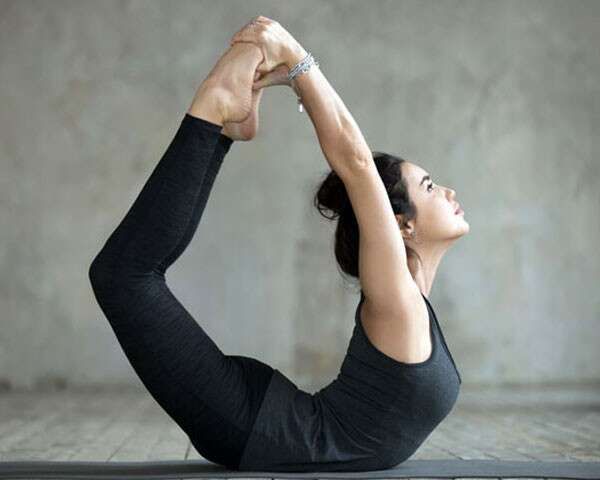Dhanurasana : Bow Pose
In the diverse realm of yoga, where each asana holds the potential to transform and heal, Dhanurasana, or Bow Pose, shines brightly as a testament to flexibility, strength, and endurance. This ancient pose, named for its resemblance to an archer’s bow, is a cornerstone in yoga practices worldwide, celebrated for its multitude of health benefits. In this blog, we delve into the intricacies of Dhanurasana, guiding beginners through its proper execution, exploring its benefits, offering tips to enhance practice, and highlighting common mistakes to avoid. Whether you’re a seasoned yogi or new to the mat, understanding and incorporating Bow Pose into your routine can open the door to improved wellness and vitality.

Steps to Perform Dhanurasana
- Starting Position: Begin by lying flat on your stomach, with your feet hip-width apart and arms by the sides of your body.
- Bend the Knees: Gently bend your knees and reach your hands backward to hold onto your ankles.
- Lift: On inhalation, lift your thighs and chest off the floor, pulling your legs up and back.
- Focus on Stretching: Concentrate on stretching your body forward and backward, mimicking the shape of a bow. Keep your gaze forward and ensure your smile and breathing are steady.
- Hold the Pose: Maintain the pose for 15-20 seconds, experiencing the stretch in your arms, legs, shoulders, chest, and neck.
- Release: Exhale slowly and bring your legs and chest to the ground. Release your ankles and relax in the prone position.
Benefits of Dhanurasana
- Improves Flexibility: Dhanurasana stretches the entire front of the body, enhancing flexibility in the back, abdomen, chest, thighs, and groin.
- Strengthens the Back Muscles: It strengthens the muscles of the back and spine, alleviating pain and discomfort.
- Stimulates Abdominal Organs: The pose massages the abdominal organs, improving digestion and relieving gastrointestinal issues.
- Enhances Posture: Regular practice corrects posture by realigning the spine and relieving tension in the back muscles.
- Boosts Energy: Dhanurasana is known for its ability to increase energy levels and reduce fatigue by stimulating the nervous system.
Tips for Beginners
- Warm-Up: Always perform a few preparatory stretches or poses to warm up the body before attempting Dhanurasana.
- Start Slow: If holding your ankles is difficult, use a yoga strap or towel around your ankles to gradually build flexibility.
- Listen to Your Body: Avoid overstretching or forcing yourself into the pose, which could lead to injury.
- Use a Soft Surface: Practice on a yoga mat or soft surface to cushion your body, especially your pelvis and ribs.
Common Mistakes
- Straining the Neck: Avoid overextending the neck; keep your gaze forward and your neck aligned with your spine.
- Holding Your Breath: Breathing is crucial in yoga; ensure you breathe steadily while holding the pose.
- Rushing the Pose: Moving too quickly into and out of the pose can cause strain. Enter and exit the pose slowly and with control.
Closing Thoughts
Dhanurasana is a powerful asana that serves as a bridge to higher levels of yoga practice. Its benefits extend beyond physical health, touching on emotional and mental well-being. For beginners, the journey into Dhanurasana can be both challenging and rewarding. Embrace the process with patience and persistence, and you will unlock new dimensions of strength, flexibility, and inner harmony. Remember, the essence of yoga lies in the journey, not just the destination. As you incorporate Dhanurasana into your practice, let it be a reminder of your potential for growth and transformation.